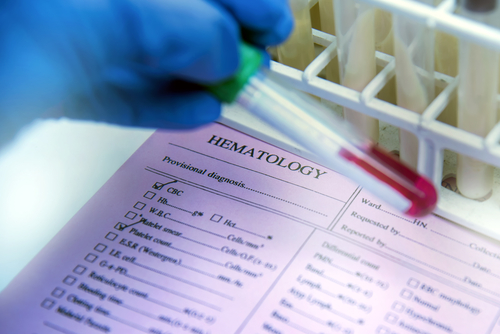GPA Patient with Lung Lesions Worsened After Immunosuppressive Treatment, Japanese Study Reports

A man who had granulomatosis with polyangiitis and small lung lesions bled in the air sacs of his lungs after doctors treated him for his inflammatory blood vessel condition, a Japanese case study shows.
Essentially, this meant that his condition had taken a turn for the worse. A mix of therapies led to his condition going into remission, and remaining that way for a year, however.
Physicians should be aware that air sac bleeding is a potential complication of granulomatosis with polyangiitis, or GPA, even when a patient’s symptoms improve after treatment, the researchers said.
The team titled the study, which appeared in the journal Internal Medicine, “Diffuse Alveolar Hemorrhage Developing Immediately after Immunosuppressive Treatments in a Patient with Granulomatosis with Polyangiitis who had Pulmonary Nodules.”
GPA is a form of ANCA-associated vasculitis, or AAV, that affects the airways, lungs, kidneys, skin, eyes, and nervous system. ANCA stands for antineutrophil cytoplasmic antibody.
Diffuse alveolar hemorrhage, or air sac bleeding, is a severe lung condition that appears in about 10 percent of GPA cases. Usually caused by inflammation in lung capillaries, it leads to patients developing dense masses in the lung, coughing blood, and anemia.
Ultimately, it can lead to respiratory failure. It is often associated with kidney disease, which adds to the possibility of a poor outcome.
Air sac bleeding associated with small vessel vasculitis, a type of inflammation common in AAV, can be treated by giving a patient new blood plasma — a procedure known as plasma exchange.
Researchers at the Nagasaki University Graduate School of Biomedical Sciences studied the case of a 65-year-old man admitted to a hospital with a month-long fever, decreased appetite, excessive blood in his eyes, and swollen legs.
He had a history of chest pain, high blood pressure, and dyslipidemia, or elevated levels of lipids in his blood. And he had smoked 40 cigarettes a day for 45 days before being hospitalized. Lipids are fats, oils or waxes.
Examinations showed he had high levels of myeloperoxidase autoantibodies, indicating AAV. He also had blood and excessive levels of protein in his urine. These findings suggested kidney disease, which doctors confirmed with a biopsy.
A lung evaluation showed that he had small lung lesions and no red blood cells in his air sacs, suggesting DAH. Doctors also found vasculitis that included blood vessel destruction and noncaseating epithelioid granulomas. All of these findings suggested sarcoidosis, an inflammatory disease that commonly affects the lungs.
After doctors diagnosed him with GPA, they began treating him with oral prednisolone, followed by intravenous pulsed methylprednisolone 10 days after treatment began. Doctors added immunosuppressant cyclophosphamide pulse therapy on day 11, despite an improvement in his fever.
On day 15, the man began coughing blood. A computed tomography scan revealed that the lower lobes of his lungs were filled with liquid, suggesting DAH. No change in size was found in his lung lesions. In addition, his blood hemoglobin levels declined, while his levels of a blood marker of inflammation known as C-reactive protein increased.
Doctors thought GPA was complicating his DAH. They administered intravenous pulsed methylprednisolone therapy for three consecutive days twice, and exchanged his plasma six times. Ventilation helped him recover his respiratory function. Doctors administered a second round of immunosuppressant cyclophosphamide pulse therapy two weeks after the first one.
The patient’s computed tomography chest scans improved after two months. Further improvements included the disappearance of a red blood cell cast in his urine and a decline in his myeloperoxidase antibody levels.
A year later, the man had shown no signs of a relapse. In total, he received nine courses of immunosuppressant cyclophosphamide pulse therapy. He is still receiving daily doses of prednisolone.
In conclusion, “physicians should be aware of the possibility of DAH, even when a patient’s symptoms and inflammatory marker levels improve after mPSL pulse [intravenous pulsed methylprednisolone] and IVCY [immunosuppressant cyclophosphamide pulse therapy],” the scientists wrote.






